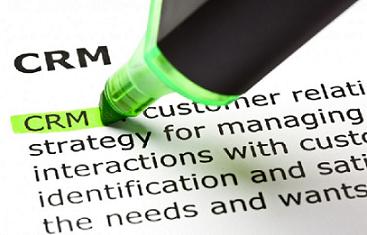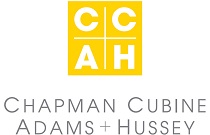
|
Leveraging CRM Software for More Effective Constituent Engagement
|
|
Posted by Guest Blogger at Aug 22, 2013 07:01 AM CDT
|
This article was written by guest author Tim Grailer, CRM Product Manager from Blackbaud.
 In my role as a product manager, I speak with many users and leaders about CRM software. I want to understand what a CRM is to them, and I try to get a sense of their expectations – what outcomes are they trying to achieve that their CRM software can enable. Typical answers include: a donor database, a place to capture all of the interactions with my constituents and revenue, and an environment where I can track the progress of a solicitation or cultivation effort.
In my role as a product manager, I speak with many users and leaders about CRM software. I want to understand what a CRM is to them, and I try to get a sense of their expectations – what outcomes are they trying to achieve that their CRM software can enable. Typical answers include: a donor database, a place to capture all of the interactions with my constituents and revenue, and an environment where I can track the progress of a solicitation or cultivation effort.
Sometimes, we get one step further – to action. Why do you capture all of that data? Why is the “360 degree view” of a constituent so important? What are you going to do with it?
Ah, here is where the value of CRM software comes in. All of the other stuff is the work to support the outcome. So what are some outcomes?
- Improve the experience of our constituents and communications
- Better target our constituents to maximize our investment
- Identify new engagement opportunities and constituents
- Mine for trends for forecasting and budgeting
- Focus our investment efforts
In the end, organizations are looking to provide the best experience for their constituents while maximizing the return on their investment. “Yes! That’s why we collect all of that data!”
So how can we use a CRM system to drive a strategy that accomplishes much of the above?
CRM Software is a Tool
First, we need to recognize that CRM software is a tool to accomplish the strategy, not a replacement for a strategy. The software will not magically increase your response rates or average gift. It will not immediately solve for gaps in business processes.
In order to make sure your tool is working correctly, there are a couple of regular “maintenance checks” you should make to ensure that you are getting the most out of your data.
Data Hygiene
Regular NCOA updates and name and address standardization processes will ensure that your postal mail is in proper working order. Make sure you have the most up-to-date information on your constituents’ whereabouts – ensuring that you can contact them regularly. It will improve your responses, as well as save costs.
Data Collection
One huge mistake that many organizations make is not taking every opportunity or touch point with a constituent to collect and refine the data that they have on them. Many organizations I have worked with are hesitant to ask for an email address on a response device or a phone number on donation form. This information is vital, not just to increase the possible solicitation channels, but more to be able to contact a constituent about an interesting piece of information or to resolve an issue with a donation or communication. And honestly, if you ask and only 15% offer this information to you, consider appending email addresses, telephone numbers, deceased status, etc so you have this information.
Contact information is not the only thing to collect. Ask constituents through what channel and how often they want to be communicated with. It will establish a stronger trust relationship between the organization and the constituent, and ensure that the information you are providing is relevant and on topic. In addition, targeted content has shown to dramatically improve response rates.
Determine what types of communication strategies your organization can support and offer those options to your constituents. They will thank you, and so will your bottom line!
Data Enrichment
We all know that data is power. Data can also be expensive. Think about the problem that you are trying to solve to help to identify what data might be useful in solving it. Don’t fall into the trap of more data is always better. Not true. Useful data is always better! Start at your strategy and work your way down through to the operational aspects. Use that process to identify what you need and how you will get it. Collect it from low-cost mechanisms first (from the constituent directly or partners) and then move on to purchasing. A little time now saves costs and headaches later on.
Posing the Right Questions
As software is becoming “smarter,” it is starting to identify ways of answering questions before we even pose them. However, in most cases, it’s not quite there yet. I always start by deciding which constituents you consider your “model” constituents. These might be high responders, high lifetime value, major donors, consistent advocates, or a mix. Identify these donors in your database and do a cluster type analysis. Using the data you have, you can understand what correlates these folks together – both from a demographic and psychographic perspective, and also in terms of treatment strategies.
Conversely, do a similar analysis of historic non-responders to a given channel. Use this information to develop different personas and develop different treatment strategies.
This way, you can begin to understand what indicators exist and what treatments work to move donors through the life cycle. Using this information, you can score your remaining constituents or adjust your segmentation strategy to fit the unique characteristics of your donors. In addition, you can gain insight into what parts of your treatment strategies are working and which ones are not working.
All in all, remember that your CRM software is a tool to accomplish a goal. Keep your tool in good working order and identify where the tool can be most useful.


















